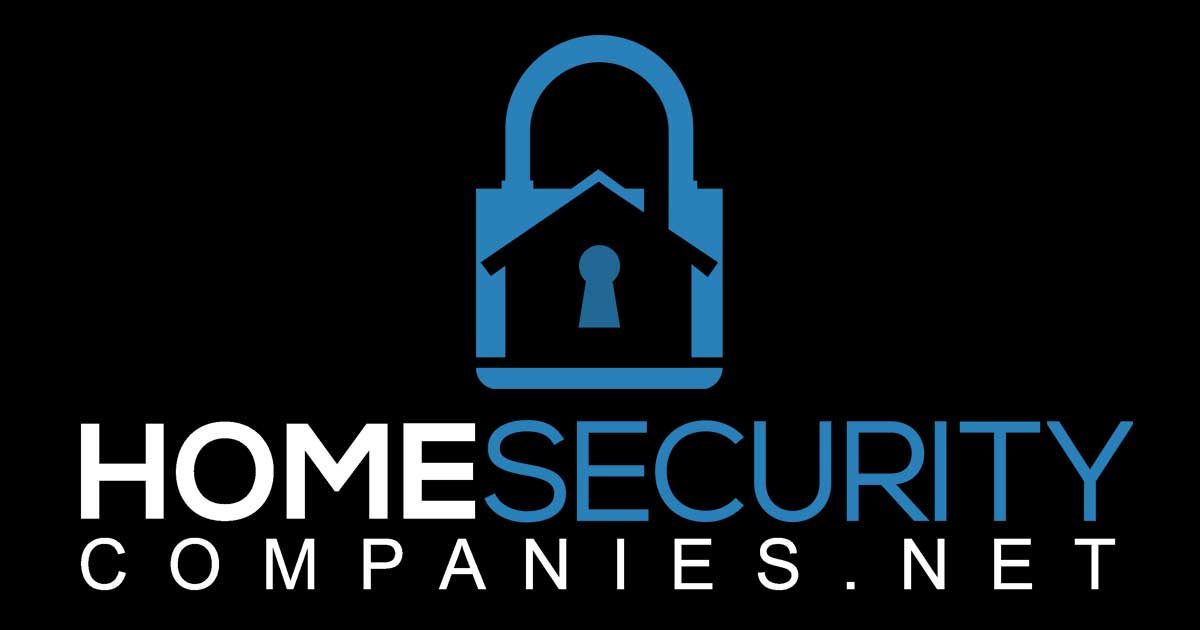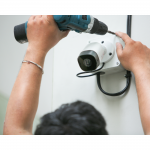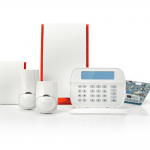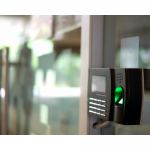As a home security system expert, I have seen firsthand the importance of having the proper equipment to protect your home and family. With advancements in technology, there are now more options than ever when securing your property.
In this article, we will explore the different types of home security equipment available on the market today. One of the most common forms of home security equipment is an alarm system. These systems typically include door and window sensors that trigger an alarm if they are opened while the system is armed.
Many modern alarm systems also feature motion sensors that can detect movement inside or outside your home. Some even come equipped with cameras that allow you to monitor activity remotely from your smartphone or tablet.
Other popular types of home security equipment include smart locks, video doorbells, and outdoor lighting systems designed to deter potential intruders. By investing in these tools, homeowners can ensure their homes remain safe and secure.
Alarm Systems
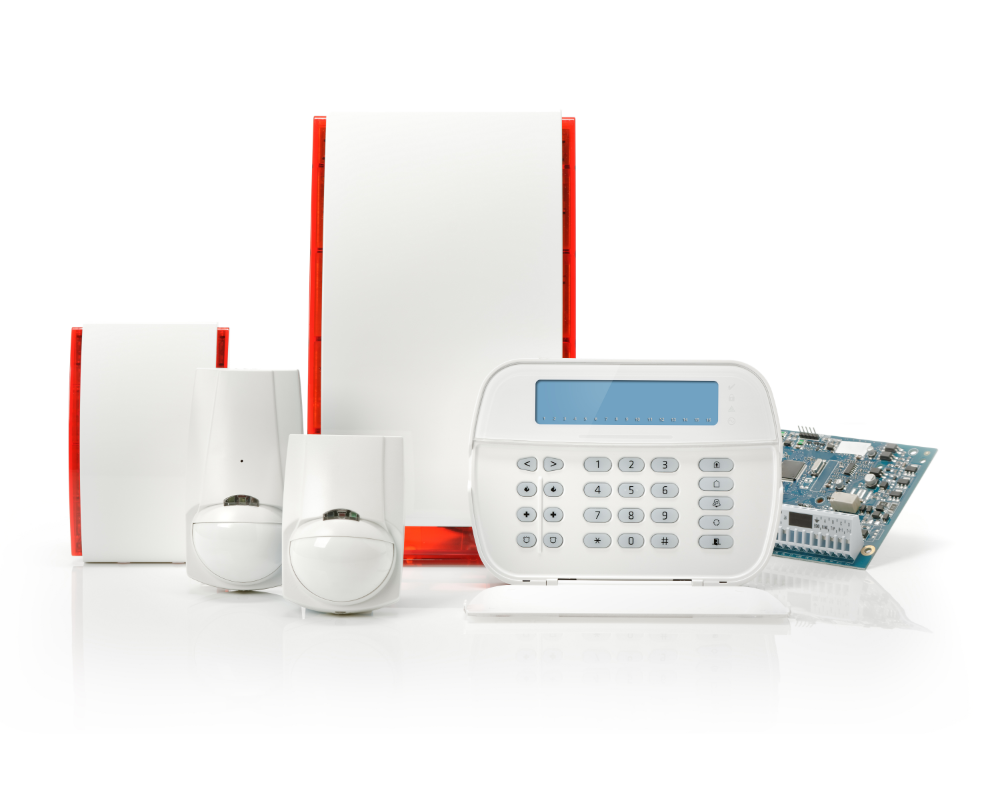
Alarm systems are one of the most popular types of home security equipment. They provide an added layer of protection against burglars and intruders, giving homeowners peace of mind knowing their homes are secure.
However, before installing an alarm system, it’s important to understand the benefits and costs associated with these devices.
One major benefit of alarm systems is that they can deter burglars from attempting to break into your home. When potential intruders see signs or hear alarms indicating a house has a security system in place, they’re more likely to move on to another target instead.
Additionally, many modern alarm systems come equipped with features like remote monitoring and alerts sent directly to your phone in case of suspicious activity.
When it comes to installation options for alarm systems, there are two main routes: DIY or professional installation. While DIY may seem like a cheaper option at first glance, it often requires time and effort that many homeowners don’t have available.
On the other hand, professional installation ensures that everything is set up correctly and working properly from day one – but it typically comes with a higher price tag.
Ultimately, deciding between DIY or professional installation will depend on individual preferences and circumstances.
Door And Window Sensors
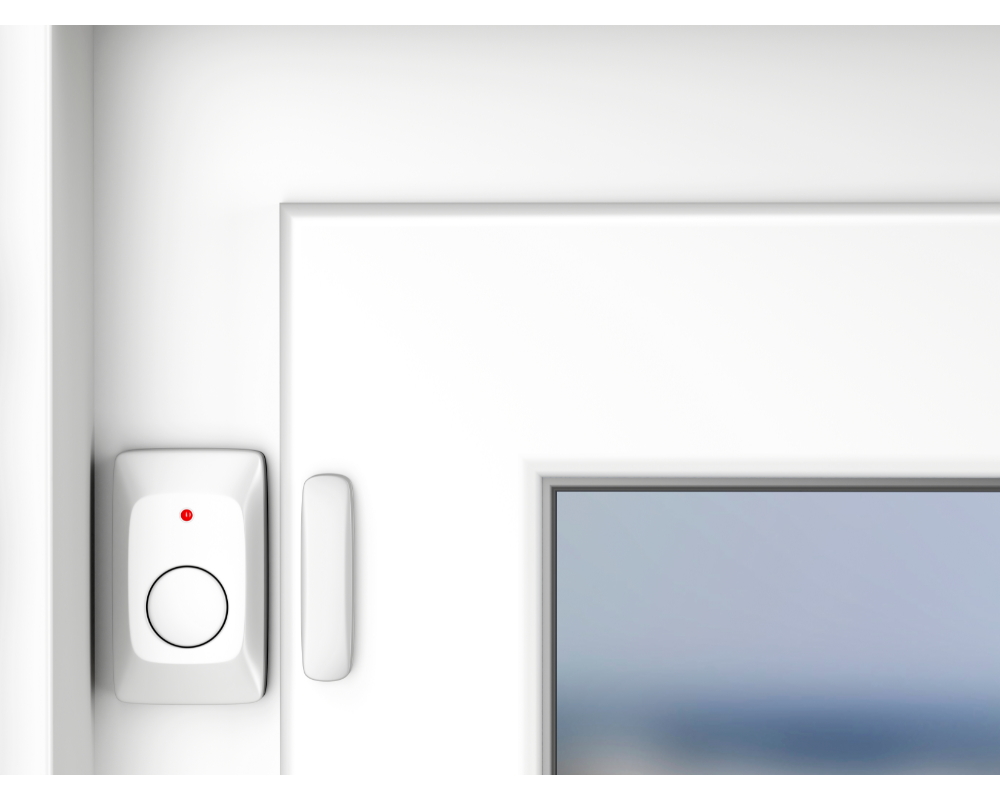
Door and window sensors are great for home security as they provide an extra layer of protection. They’re relatively easy to install; follow the directions carefully.
As far as functionality, these sensors detect when a door or window is opened and sends an alert to your security system.
Lastly, they’re an affordable way to give your home extra protection.
Functionality
Have you ever wondered how door and window sensors work? Well, as a home security system expert, let me tell you about their functionality.
Door and window sensors are designed to detect when someone enters or exits your home through the doors or windows. They do this by using magnets attached to each side of the opening. When the two parts of the sensor become separated, an alarm is triggered.
Now, let’s talk about the installation process for these sensors. It is relatively easy and can be done by anyone with basic DIY skills. First, you must determine where to place them on your doors and windows. Then, attach one part of the sensor to the frame and the other to the door or window itself.
The next step is to integrate them with other home automation devices, such as smart locks or cameras, so they all work together seamlessly.
The integration with other home automation devices will provide even more protection for your home. For example, if someone tries to break in through a locked door, not only will the door sensor trigger an alarm, but it will also send a notification to your smartphone, which can activate cameras around your house, giving you complete control over your home’s security.
With all these features working together simultaneously, you can rest assured knowing that your home is protected 24/7 without worrying about its safety again!
Installation Process
So, we’ve talked about the functionality of door and window sensors.
Now let’s move on to another essential aspect- the installation process.
One of the significant advantages of these sensors is their easy DIY installation.
You don’t need any professional help as long you have some basic skills in handling tools.
However, there are pros and cons to both DIY and professional installations.
While a professional installer will ensure every sensor is installed correctly and connected with other home automation devices seamlessly, it can be quite expensive.
On the other hand, installing them yourself may save you money but could lead to errors that compromise your home security system’s efficiency.
When undertaking a DIY project for installing door and window sensors, follow manufacturer instructions carefully.
Before attaching sensors, ensure they’re compatible with your doors or windows precisely where you intend to install them.
Also, ensure that all parts are secure enough not to fall off easily.
In conclusion, proper installation of door and window sensors is crucial for an effective home security system.
Whether it’s a DIY or professional installation, always place emphasis on accuracy as this determines its effectiveness in keeping your home safe from intruders.
Motion Sensors
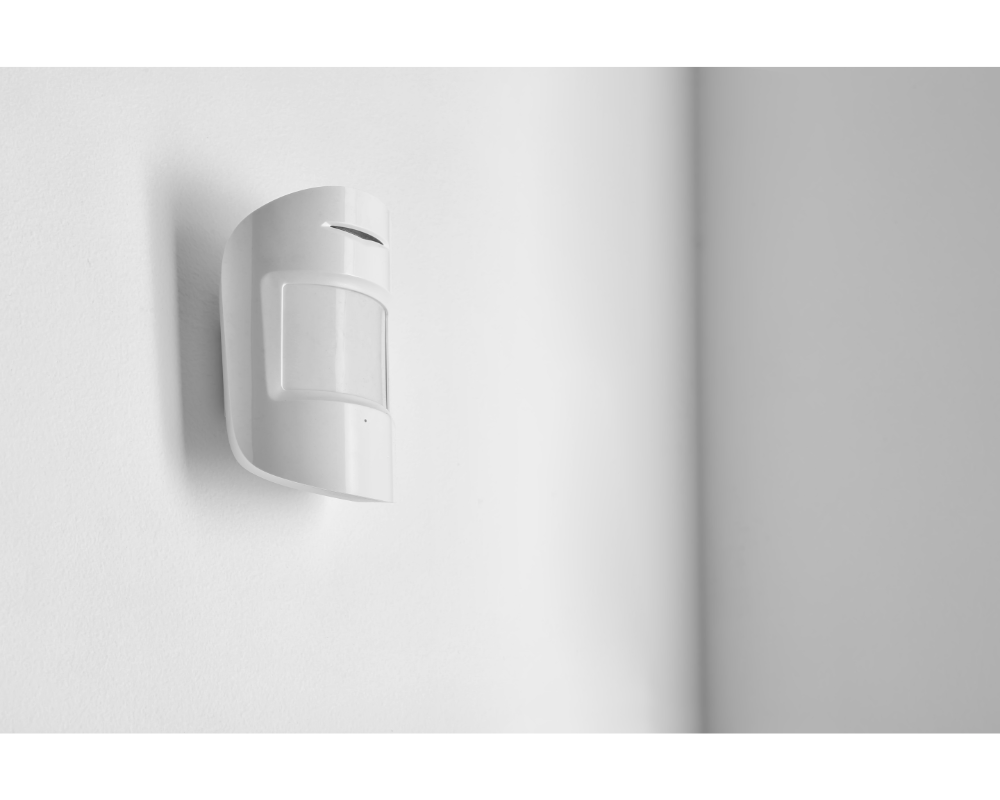
Motion Sensors: The Effective and Affordable Security Solution
Motion sensors are a popular choice for homeowners looking to secure their properties. These devices work by detecting movement in the designated area, triggering an alarm, or alerting your security company. Motion sensors are relatively affordable and easy to install compared to other home security equipment.
The cost of motion sensors can vary depending on factors such as the type of sensor, brand, and additional features like pet immunity. On average, you can expect to pay anywhere from $20 to $100 per sensor.
Installation is also straightforward and can be done by most homeowners without professional help. However, it’s important to position the sensors correctly, ensuring maximum coverage while minimizing false alarms.
One significant benefit of using motion sensors for home security is that they detect intruders before they enter your property. This means you’ll have more time to react and contact authorities if needed. Another advantage is that these devices can provide an added layer of protection when used along with other security measures like cameras and door/window sensors.
One potential drawback is that pets or small animals may trigger false alarms if not set up correctly.
- Motion sensors come in different types, including passive infrared (PIR), microwave, dual-tech, and acoustic.
- Some models offer adjustable sensitivity settings allowing you to customize how much movement triggers an alarm.
- Wireless options are available, which eliminate the need for wiring, making installation even easier.
In summary, motion sensors are a reliable and budget-friendly option for securing your home. Proper placement and setup offer effective protection against unwanted visitors while minimizing false alarms caused by pets or environmental factors. When combined with other security equipment, motion sensors provide comprehensive coverage giving you peace of mind knowing that your family and belongings are safe.
Cameras For Remote Monitoring
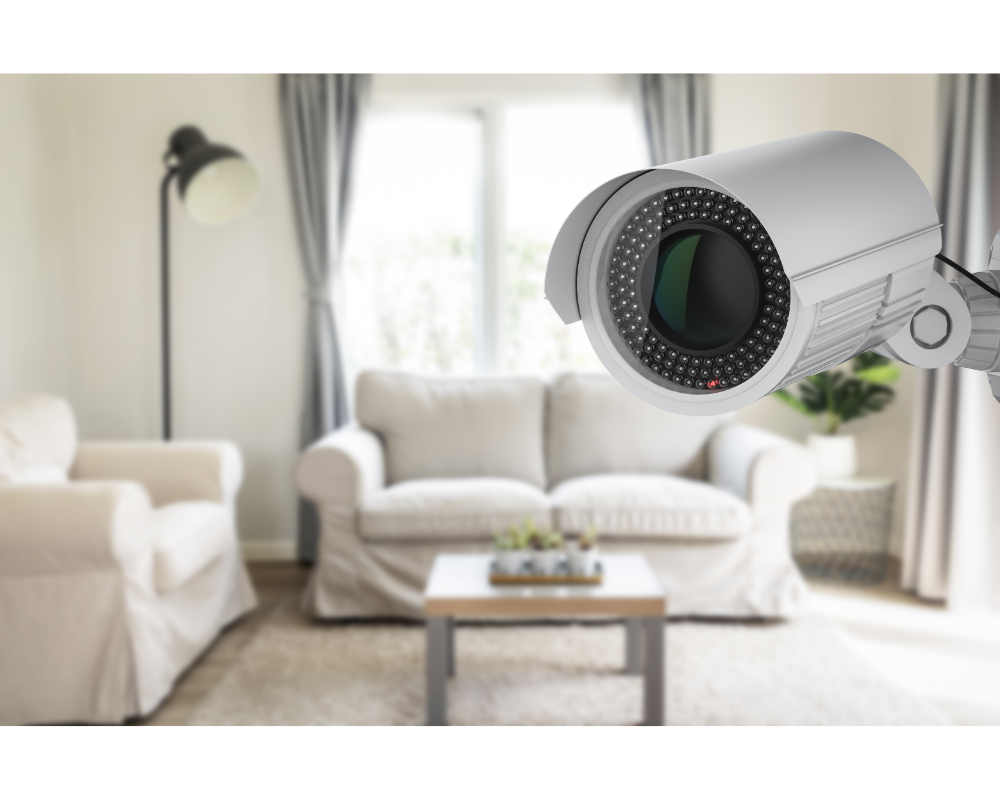
Regarding remote monitoring, cameras are a popular choice for homeowners. With wireless connectivity, you can easily access live footage of your home from anywhere using your smartphone or tablet. This is especially useful when you’re away on vacation or at work and want to check in on your property.
However, with the convenience of remote monitoring comes privacy concerns. It’s important to choose cameras with strong security features such as encryption and password protection.
You should also consider where you place the cameras – avoid areas where they could potentially capture sensitive information like credit card numbers or personal conversations.
Overall, cameras for remote monitoring can provide peace of mind knowing that you can keep an eye on your home even when you’re not there. Just be sure to take the necessary precautions to protect your privacy and ensure that any potential intruders cannot hack into your camera system.
Smart Locks

Moving on from cameras for remote monitoring, let’s talk about smart locks. These electronic locks can be controlled through a smartphone app or other devices with internet connectivity. Smart lock installation is relatively easy and doesn’t require any special tools.
One of the most significant benefits of keyless entry is convenience. With a smart lock, you no longer have to fumble around looking for your keys in your bag or pocket. You don’t even need to remember where you put them as long as you have access to your phone. Additionally, some smart locks come equipped with features such as automatic locking when you leave the house and unlocking when you’re nearby.
Another essential advantage of installing a smart lock is enhanced security. Experienced burglars can easily pick traditional locks, but smart locks cannot be manipulated in this way because they use digital encryption technology instead of traditional mechanical pins and tumblers. Moreover, many models offer real-time notifications whenever someone enters or exits your home so that you can keep track of who has access at all times.
In summary, if you want to upgrade the security system in your home while also improving convenience, investing in a smart lock is an excellent choice. The ease of installation, coupled with the added layer of protection against break-ins, makes it one of the best options available today.
Video Doorbells
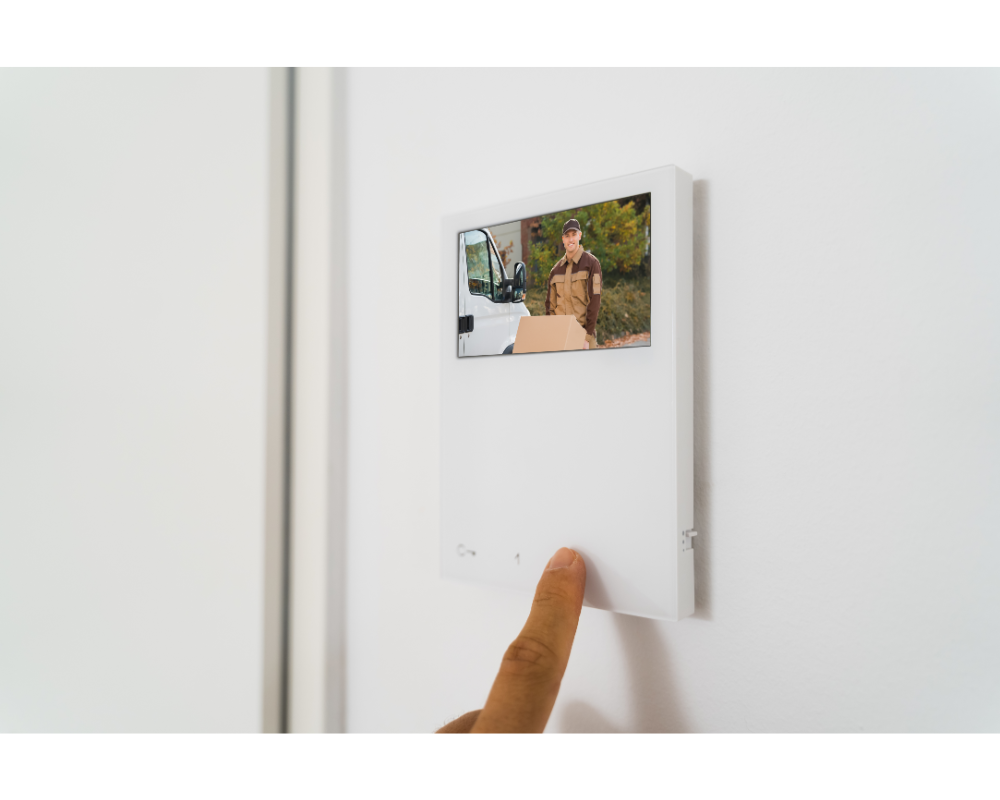
When it comes to keeping your home secure, video doorbells are becoming increasingly popular. These devices allow you to see who is at your front door before opening it or even while away from home.
Video doorbell features vary between brands, but the most common include two-way audio communication, motion detection, and night vision.
When comparing video doorbell brands, there are a few factors to consider. First and foremost is image quality – you want to see who is at your doorstep. Additionally, look for a device with reliable motion detection that won’t trigger false alarms too often. Finally, check if the brand offers cloud storage options so you can access footage anytime and anywhere.
Overall, installing a video doorbell is an effective way to increase the security of your home. With advanced features such as facial recognition and live streaming capabilities becoming more prevalent in these products, homeowners have many options when selecting a video doorbell system. Remember what features are important to you, and research various brands before making a purchase decision.
Outdoor Lighting Systems
Motion-sensing lights are great for home security; they’ll turn on anytime someone approaches the house, letting you know when there’s movement outside.
Solar-powered lights are a great choice if you want to save on your energy bill.
I’d recommend installing both types, as they can work together to give you maximum security.
They look great, so you won’t have to sacrifice your home’s style.
Motion Sensing Lights
Imagine you are taking a stroll in your garden, and suddenly, the lights turn on automatically.
Motion-sensing lights are an excellent addition to any outdoor lighting system. These lights work by detecting movement within their range using infrared technology.
As a home security expert, I highly recommend motion-sensing lights for homeowners looking for an additional layer of protection against intruders. They provide ample illumination and act as a deterrent for potential burglars.
Installation tips include placing them high enough so they cannot be tampered with easily and pointing them toward areas with frequent activity.
When buying the best brand of motion-sensing lights, consider brands such as Ring, Heath Zenith, or Defiant. These brands offer products that come equipped with advanced features like adjustable sensitivity settings and daytime shut-off options.
With these products, you can have peace of mind knowing that your property is well protected even when you’re away from home.
Solar-Powered Lights
Now that we’ve discussed motion-sensing lights let’s move on to another type of outdoor lighting system – solar-powered lights. These lights are becoming increasingly popular due to their numerous benefits, including being eco-friendly and cost-effective.
One major advantage of solar-powered lights is that they do not require wiring or electricity connections. This makes the installation process much easier and more convenient for homeowners looking to add outdoor lighting without hiring an electrician.
To install these lights, place them in areas where they can receive direct sunlight during the day. As a home security expert, I recommend placing them strategically around your property near entryways and walkways, as this will further deter potential intruders.
In addition to being easy to install, solar-powered lights offer long-lasting illumination throughout the night, saving you money on energy bills. With these benefits combined, it’s no wonder why so many homeowners are switching to solar-powered outdoor lighting systems.
Motion-Activated Floodlights

As a home security system expert, I often recommend motion-activated floodlights to my clients.
These lights are like vigilant guards that stand watch over your property and keep it safe from intruders. They come with many benefits, such as their ability to startle burglars by suddenly illuminating dark corners of the yard.
Installing motion-activated floodlights is easy for those with basic electrical knowledge or who can hire an electrician. The installation involves attaching the light fixture to a wall or post and wiring it into the existing electrical circuit. Once installed, these lights require minimal maintenance and provide long-lasting protection against would-be intruders.
Compared to other types of outdoor lighting, motion-activated floodlights offer superior security features. Unlike regular porch lights that stay on all night, they only turn on when they detect motion within their range. This means you won’t waste energy or money on keeping unnecessary lights lit up throughout the night.
Plus, since they activate upon detecting movement, they are more likely to catch someone trying to break in or vandalize your property without alerting them beforehand.
Surveillance Cameras
Surveillance cameras are an essential component of any home security system. They provide a layer of protection unmatched by other types of equipment.
When choosing the right surveillance camera for your home, there are a few things to consider. Firstly, you need to decide where you want to install them – inside and outside your house.
Installation tips for outdoor cameras include ensuring they are weather-resistant and mounted at a height that cannot be reached easily. For indoor cameras, ensure they have wide viewing angles so that you can monitor multiple areas from one position. Additionally, ensure the cameras are placed in strategic locations such as entry points or high-traffic areas.
Regarding brands, some of the best on the market include Nest Cam IQ Outdoor, Arlo Pro 3 Floodlight Camera, and Ring Spotlight Cam Battery. These brands offer reliable performance with features like motion detection, night vision, and two-way audio communication.
With these top-of-the-line brands, homeowners can rest assured knowing their homes are being monitored effectively. Investing in surveillance cameras is crucial for protecting your home against intruders.
Following proper installation tips and selecting reputable brands like Nest Cam IQ Outdoor and Arlo Pro 3 Floodlight Camera can increase your peace of mind while keeping your family safe without breaking the bank.
Home Security Packages
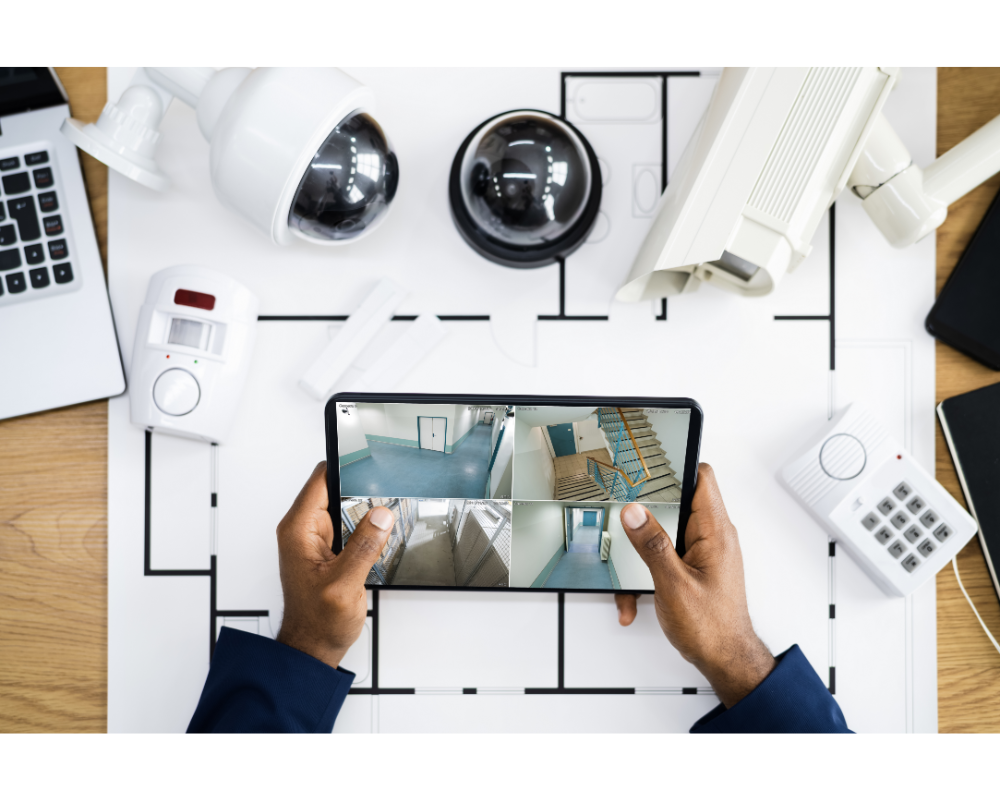
Surveillance cameras are an essential part of any home security system, allowing homeowners to monitor their property and keep a watchful eye on potential intruders. However, surveillance cameras alone may not be enough to protect your home from harm fully. That’s where cost-effective options like door and window sensors come in.
Door and window sensors provide an added layer of protection by alerting you when someone tries to enter your home through an unauthorized entry point. These small devices can easily be installed on all doors and windows throughout the house, giving you peace of mind knowing that your entire perimeter is being monitored. Additionally, these sensors often come with customization options so that you can set them up to fit your specific needs.
Another cost-effective option for those looking to beef up their home security system is motion detectors. These devices use infrared technology to detect movement within a certain area and can send alerts directly to your phone or alarm monitoring company if triggered. Like door and window sensors, motion detectors can also be customized based on factors such as sensitivity levels, detection range, and more.
When it comes to protecting your home, many different types of equipment are available at various price points. While surveillance cameras are important, cost-effective options like door/window sensors and motion detectors offer additional layers of protection without breaking the bank.
With customizable settings tailored specifically to your household’s needs, these devices are sure to give you the peace of mind that comes with knowing your property is safeguarded against potential threats.
Frequently Asked Questions
How do I choose the best home security equipment for my specific needs?
When considering how to choose the best home security equipment for your specific needs, it’s important to consider several factors.
First and foremost, you’ll want to evaluate your property and determine what areas are most vulnerable or in need of protection.
From there, you can compare different types of home security equipment, such as cameras, alarms, and smart locks, based on their features and capabilities.
Some systems may be better suited for indoor use, while others excel at outdoor monitoring.
Consider whether a wired or wireless setup will work best for your household.
By taking all these factors into consideration when choosing your home security equipment, you can ensure that your system is tailored to your unique needs and provides optimal protection for your family and belongings.
Can I install home security equipment myself, or do I need professional installation?
When it comes to installing home security equipment, there are both advantages and disadvantages to doing it yourself versus hiring a professional.
DIY installation tips can be found online or in product manuals, but keep in mind that inexperienced installers may overlook crucial steps that could compromise the effectiveness of your system.
On the other hand, professional installation ensures that everything is done correctly and efficiently, saving you time and potentially reducing costly mistakes. Additionally, many companies offer warranties on their professionally installed systems, giving you added peace of mind.
Ultimately, the decision between DIY and professional installation will depend on your level of expertise and comfort with handling intricate technical tasks.
Are there any laws or regulations I need to be aware of when installing home security equipment?
Before installing any home security equipment, it is essential to be aware of the legal requirements and installation guidelines.
As a home security system expert, I highly recommend researching your local laws and regulations regarding surveillance cameras, alarm systems, and other security devices before making any purchases or installations.
Some states require permits for certain types of equipment or have strict rules about where they can be placed on your property.
Additionally, improper installation can lead to ineffective security and potential liability issues if someone is injured as a result.
Always follow manufacturer instructions carefully, or consider hiring a professional installer to ensure your home security system meets all necessary legal standards while providing maximum protection for you and your family.
Can I integrate different types of home security equipment from different brands into one system?
Compatibility is key when it comes to integrating different types of home security equipment from different brands into one system.
While some brands may offer their own proprietary systems that only work with their own products, many others are designed to be compatible with a wide range of devices and technologies.
As an expert in the field, I recommend doing your research and comparing the features and specifications of each brand’s offerings before making any decisions about which equipment to purchase.
By ensuring integration compatibility between all components of your home security system, you can achieve maximum protection for your property and peace of mind for yourself and your loved ones.
Can I monitor my home security system remotely without a monthly fee?
If you’re looking for a way to monitor your DIY home security system remotely without paying a monthly fee, the good news is that it’s possible.
However, there are both pros and cons to this approach.
On the plus side, you’ll save money by not having to pay ongoing fees to a monitoring service.
Additionally, remote access allows you to monitor things even when you’re away from home.
That said, there are also some potential drawbacks to consider.
For example, if your internet connection goes down or your phone battery dies while you’re out of town, you may not be able to check in on your system.
As a home security expert, I recommend weighing these factors carefully before deciding whether or not remote monitoring is right for you.
Securing Your Peace of Mind: Choosing the Right Home Security Equipment
Well, there you have it – the different types of home security equipment available and some important considerations when choosing and installing them.
As a home security system expert, I believe everyone should take their safety seriously and invest in quality equipment to protect their homes.
However, as ironic as it may seem, no amount of high-tech gadgets can guarantee complete protection from all potential threats.
While home security equipment is an important aspect of keeping your property safe, it’s only one piece of the puzzle.
It’s equally essential to be aware of your surroundings and take simple preventative measures like locking doors and windows.
So go ahead and invest in good security equipment but don’t forget the basics!
